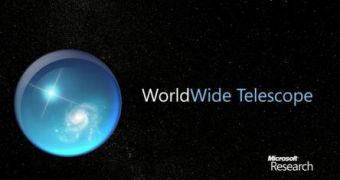The WorldWide Telescope Academic Development Kit January 2009 release is a project from Microsoft Research designed to catalyze the production and integration of a higher volume of content into WorldWide Telescope. Available as a free download, the kit is set up to permit the conversion of astronomical content (be it digital images or information) into a format that can play nice with the WorldWide Telescope. In this regard, Microsoft has bundled a total of two tools into the WorldWide Telescope Academic Development Kit January 2009 release, namely the WWT SphereToaster Tool and the WWT StudyChopper Tool.
“The WWT SphereToaster Tool enables users to provide images in an equirectangular format that covers all or part of the inside or outside of a sphere,” Dan Fay, director, Technical Computing North America, revealed. “This includes, for example, cylindrical projections of panoramas and all-sky surveys. SphereToaster converts these to a different projection system—the TOAST system, currently unique to WWT—and then stores an image pyramid of the resulting TOAST-projected image. The tool also produces thumbnails and WTML files.”
Astronomical images, panoramas, sky surveys, and planetary textures can all be converted with the kit to the native format of the WorldWide Telescope, and shared via Microsoft's telescope on the desktop. In this regard, Microsoft indicated that WTML files (XML files in the WWT format) were capable of keeping track of various information including metadata, while connecting to digital pictures via the Internet. At the start of this year, Microsoft took the WorldWide telescope one step further. The evolution was synonymous with the introduction of the WorldWide Telescope Solstice Borealis Beta version 2.2.41.1.
“The WWT StudyChopper Tool enables users to provide photographs of small parts of the sky, such as a high-resolution image of the Crab Nebula, and enter appropriate coordinate information and metadata,” Fay added. “It creates image pyramids of the photographs, thumbnails, and WTML files. Once the output image pyramids and thumbnails are hosted by the user's servers and the WTML files are made available to others, anyone with access to the WTML files will be able to browse the images in WWT.”
The WorldWide Telescope Academic Development Kit January 2009 release is available for download here.

 14 DAY TRIAL //
14 DAY TRIAL //